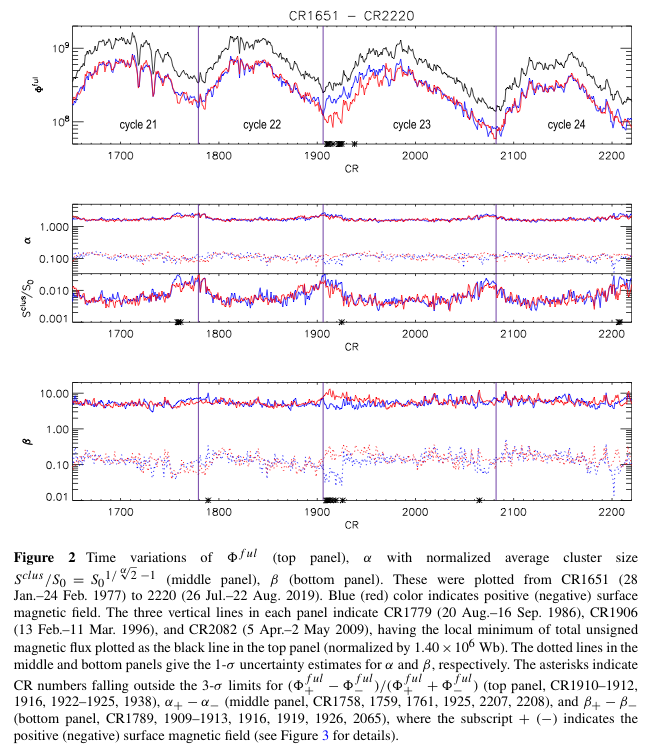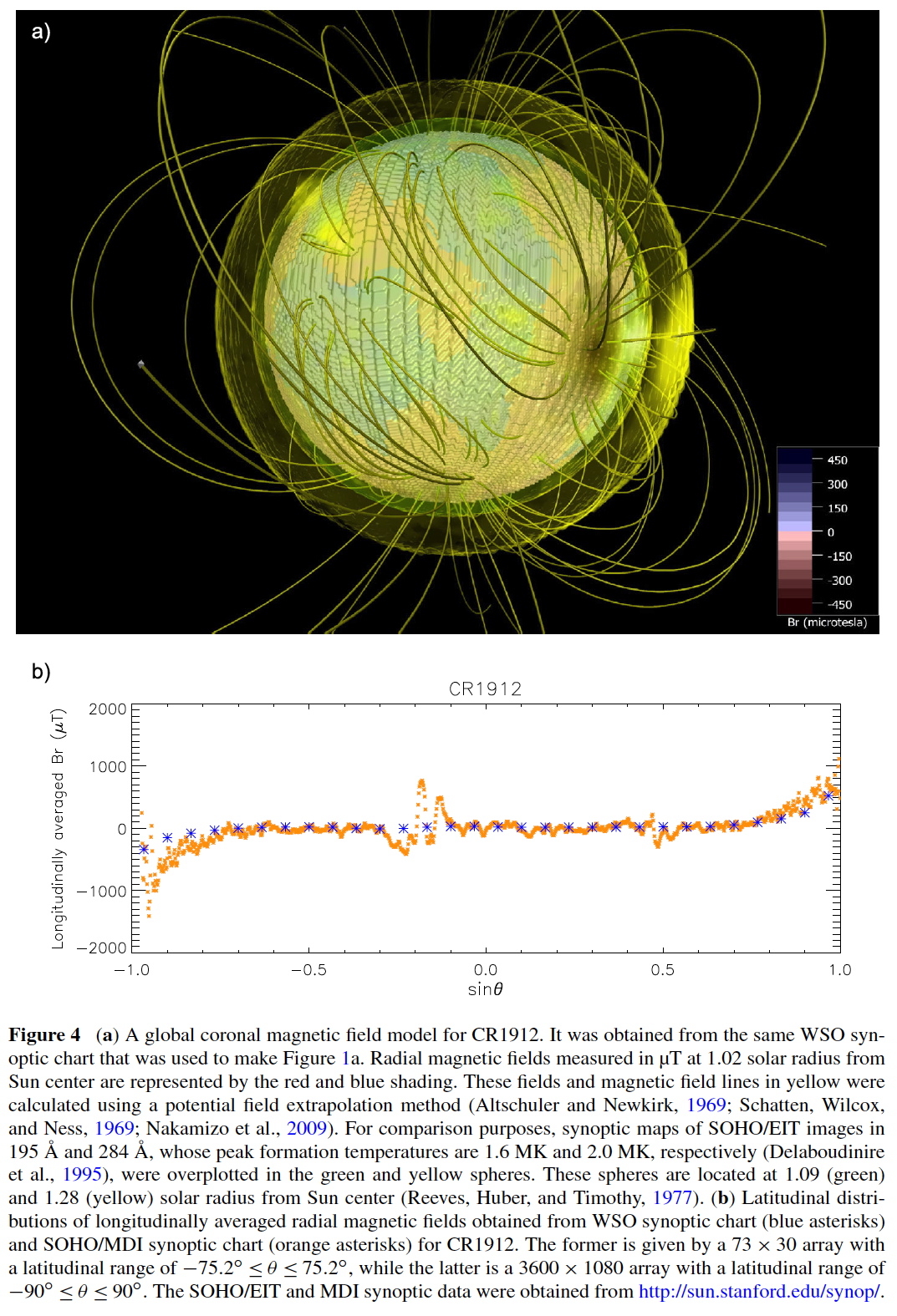Aggregation Characteristics of the Sun’s Large-Scale Magnetic Field Associated with Global Magnetic Anomaly in the Last Extended Solar Cycle
The solar cycle represents the Sun’s periodically changing magnetic state, which is potentially subject to global magnetic anomalies emerging on it. What the characteristics are of the Sun’s large-scale magnetic field playing roles in these anomalies is a key to clarifying how the Sun deviates from its normal magnetic state. This article reported aggregation characteristics of the large-scale magnetic field associated with a global magnetic anomaly that emerged when the Sun went through one of the longest solar cycles in two hundred years (cycle 23). These characteristics were identified by extracting cluster feature values of solar surface magnetic fields via a population ecological method from synoptic maps provided by Wilcox Solar Observatory (WSO synoptic maps), which had been obtained by the longest homogeneous series of magnetic field observations for the past several decades. We found that the anomaly was due to the uneven clustering of positive and negative surface magnetic fields that occurred during the solar minimum leading to the last extended solar cycle. This may provide an insight into magnetic field characteristics peculiar to the solar minimum with extended cycle length.
The positive-negative magnetic flux imbalance associated with the above-mentioned uneven clustering found in specific WSO synoptic maps (e.g. CR1912) could be related to an extreme concentration of the negative surface magnetic field in the southern polar region. This is suggested by Figure 4b comparing the latitudinal distributions of longitudinally averaged
radial magnetic fields obtained from WSO synoptic map for CR1912 and the corresponding synoptic map constructed
with magnetogram data of the Michelson Doppler Imager (MDI) on
board the Solar and Heliospheric Observatory (SOHO), the latter of which not only resolves smaller-scale
magnetic field but has a wider field of view than the former, thereby revealing that strong negative surface magnetic field
was distributed in the vicinity of the south pole when the anomaly emerged.
This study is probably the first to quantitatively demonstrate an imbalance between large-scale distributions of positive and negative surface magnetic fields, showing how the Sun deviated from its normal magnetic state. The Sun spent a fair amount of time recovering from the imbalance in the extended cycle.
Reference
Magara Tetsuya, An Junmo, Lee Hwanhee, & Kang Jihye
Solar Physics, 296, 41
Unit: μT



movie
